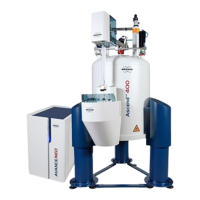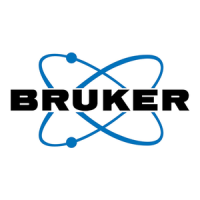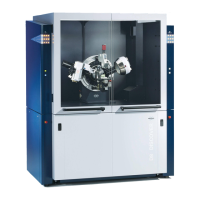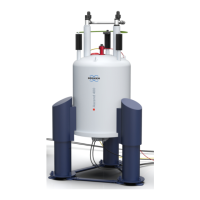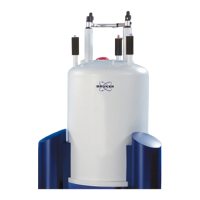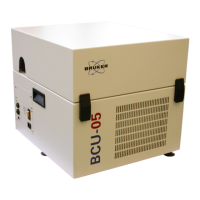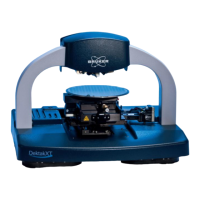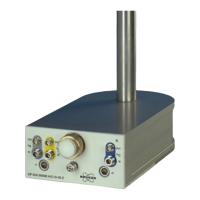Basic Procedures
42 / 86 H171804E_14_001
• In the ATMM control window, click the Tuning buttons to move and display the wobble
curve centered.
• In the ATMM control window, click the Matching buttons to adjust the dip of the wobble
curve to the lowest position.
It is very convenient to look at the complex wobble display. If the circle with the red dot is too
big or too small, then adjust matching first. Once the circle runs through the center of the
coordinate system, bring the red dot into the center by adjusting the tuning. In essence, the
curve tells you in which order to adjust tuning and matching.
Note: The T/M settings will be saved with a click on the Start button.
Since the Tuning and Matching adjustment interact with each other, a repeat of all steps are
necessary for a perfect tune and match. If multiple frequencies are used in a parameter set
such as C13CPD, use the Nucleus Selection radio buttons in the ATMM control window to
switch to another nucleus and repeat the tuning and matching.
The wobble routine works by transmitting a weak signal to the probe and comparing the
probe and cable impedance with a 50 Ohm reference within the HPPR. The transmitted
frequency is centered on SFO1, SFO2 etc. but "swept“ over a range determined by the size
of the parameter WBSW (see below). The resultant curve is the familiar response curve of a
resonance circuit and is simply a measure of the amplitude of the reflected signal (vertical
axis) against frequency (horizontal axis).
Matching involves adjusting the probe so that the minimum of the wobble curve is at the
base of the display (i.e. touching the horizontal frequency axis). This represents minimum
reflection of the transmitted signal.
Tuning involves ensuring that this occurs at the frequency of transmission which will be at
the center of the screen’s horizontal scale. It will be seen however that the tune and match
adjustments interact with each other and must be adjusted in tandem. When the wobble
curve minimum is centered and at the base of the screen the probe has been optimally tuned
and matched.
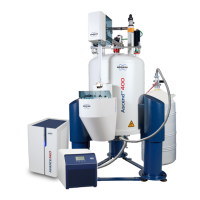
